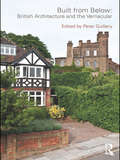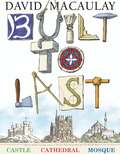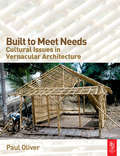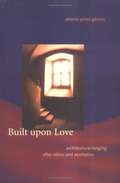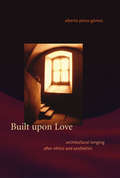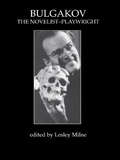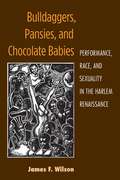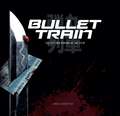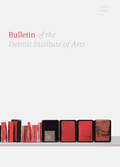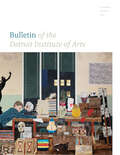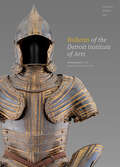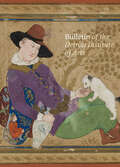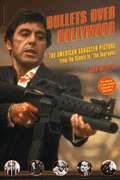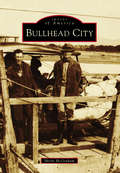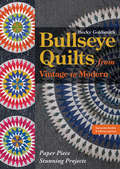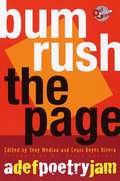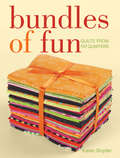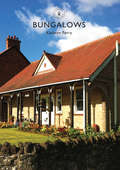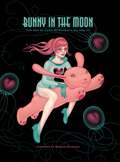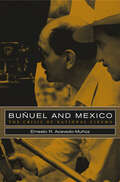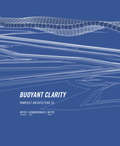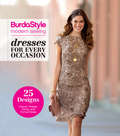- Table View
- List View
Built Together
by Mina StarsiakJoin lovable Mina Starsiak Hawk from HGTV&’s hit show Good Bones as she brings her signature humor and heart to this warm and welcoming story about families of all shapes and sizes. Gather around for this celebration of diversity and acceptance as you are reminded just how wonderful it is to be part of your own unique family. Strong families, like strong houses, have sturdy foundations built on trust, love, and a whole lot of TLC. And like houses, no two families look exactly alike. After reading Built Together, children will learn:There are countless ways to be a family—including adopted, divorced, single-parent, or blended familiesAbout diversity and acceptance of not only your own family, but families that look nothing like yoursBuilt Together:Is great for readers ages 4-8Features bright, playful illustrations that bring this inspiring story to lifeIs filled with the vibrant community spirit of Good Bones, with instant appeal to long-time fans and new friends alikeIs a great resource for teachers and parents to help teach children the importance of acceptance and familyDrawing on her own stories of starting Two Chicks and a Hammer with her mom, working with her stepfamily, fostering her niece, adopting her rescue dogs, and playing with her son, Mina invites readers young and old to join her in discovering how we are all stronger together. Because, in the end, families are built as well as made.
Built from Below: British Architecture And The Vernacular
by Peter GuilleryThis book extends the concept of British vernacular architecture beyond its traditional base of pre-modern domestic and industrial architecture to embrace other buildings such as places of worship, villas, hospitals, suburban semis and post-war mass housing. Engaging with wider issues of social and cultural history, this book is of use to anyone with an interest in architectural history. Presented in an essentially chronological sequence, from the medieval to the post-war, diverse fresh viewpoints in the chapters of this book reinforce understanding of how building design emerges not just from individual agency, that is architects, but also from the collective traditions of society.
Built to Last
by David MacaulayA nomad fashion's a home that's meant to be built and rebuilt. A family tears down an old house and erects a new one in its place. Even the Eiffel Tower wasn't meant to be anything more than temporary. As humans, we don't always build things to endure the test of time. Built to Last brings together the award-winning author and artist David Macaulay's creative, exacting thinking about buildings and designs that were crafted with a strength of structure and purpose that defy the everyday: Castle, Cathedral, and Mosque. This gorgeous volume includes newly researched information about each building and how it was built. And, for the first time ever, the Caldecott Honor-winning Castle and Cathedral appear in full color--with stunning new drawings that enrich the reader's understanding of these structures, and capture intriguing new perspectives and details. Just as the buildings themselves were created to last, our interest in the structures themselves, the people who created them, and the purposes for which they were made endures as well. This impeccably researched volume--a necessary addition to the bookshelf of anyone interested in architecture--celebrates this spirit of endurance and serves as a reminder that building well and leaving something of consequence behind, whether a building, a design, or an idea, is still of the utmost importance.
Built to Meet Needs: Cultural Issues in Vernacular Architecture
by Paul OliverThe study of vernacular architecture explores the characteristics of domestic buildings in particular regions or localities, and the many social and cultural factors that have contributed to their evolution. In this book, vernacular architecture specialist Paul Oliver brings together a wealth of information that spans over two decades, and the whole globe. Some previously unpublished papers, as well as those only available in hard to find conference proceedings, are brought together in one volume to form a fascinating reference for students and professional architects, as well as all those involved with planning housing schemes in their home countries and overseas.
Built upon Love: Architectural Longing after Ethics and Aesthetics (The\mit Press Ser.)
by Alberto Perez-GomezA vision of architecture that transcends concerns of form and function and finds the connections between the architect's wish to design a beautiful world and architecture's imperative to provide a better place for society.The forced polarity between form and function in considerations of architecture—opposing art to social interests, ethics to poetic expression—obscures the deep connections between ethical and poetical values in architectural tradition. Architecture has been, and must continue to be, writes Alberto Pérez-Gómez, built upon love. Modernity has rightly rejected past architectural excesses, but, Pérez-Gómez argues, the materialistic and technological alternatives it proposes do not answer satisfactorily the complex desire that defines humanity. True architecture is concerned with far more than fashionable form, affordable homes, and sustainable development; it responds to a desire for an eloquent place to dwell—one that lovingly provides a sense of order resonant with our dreams. In Built upon Love Pérez-Gómez uncovers the relationship between love and architecture in order to find the points of contact between poetics and ethics—between the architect's wish to design a beautiful world and architecture's imperative to provide a better place for society.Eros, as first imagined by the early lyric poets of classical Greece, is the invisible force at the root of our capacity to create and comprehend the poetic image. Pérez-Gómez examines the nature of architectural form in the light of eros, seduction, and the tradition of the poetic image in Western architecture. He charts the ethical dimension of architecture, tracing the connections between philia—the love of friends that entails mutual responsibility among equals—and architectural program. He explores the position of architecture at the limits of language and discusses the analogical language of philia in modernist architectural theory. Finally, he uncovers connections between ethics and poetics, describing a contemporary practice of architecture under the sign of love, incorporating both eros and philia.
Bulgakov: The Novelist-Playwright
by Lesley MilneFirst published in 1996. Routledge is an imprint of Taylor & Francis, an informa company.
Bulldaggers, Pansies, and Chocolate Babies: Performance, Race, and Sexuality in the Harlem Renaissance
by James WilsonBulldaggers, Pansies, and Chocolate Babies shines the spotlight on historically neglected plays and performances that challenged early twentieth-century notions of the stratification of race, gender, class, and sexual orientation. On Broadway stages, in Harlem nightclubs and dance halls, and within private homes sponsoring rent parties, African American performers of the 1920s and early 1930s teased the limits of white middle-class morality. Blues-singing lesbians, popularly known as "bulldaggers," performed bawdy songs; cross-dressing men vied for the top prizes in lavish drag balls; and black and white women flaunted their sexuality in scandalous melodramas and musical revues. Race leaders, preachers, and theater critics spoke out against these performances that threatened to undermine social and political progress, but to no avail: mainstream audiences could not get enough of the riotous entertainment.<P> Many of the plays and performances explored here, central to the cultural debates of their time, had been previously overlooked by theater historians. Among the performances discussed are David Belasco's controversial production of Edward Sheldon and Charles MacArthur's Lulu Belle (1926), with its raucous, libidinous view of Harlem. The title character, as performed by a white woman in blackface, became a symbol of defiance for the gay subculture and was simultaneously held up as a symbol of supposedly immoral black women. African Americans Florence Mills and Ethel Waters, two of the most famous performers of the 1920s, countered the Lulu Belle stereotype in written statements and through parody, thereby reflecting the powerful effect this fictional character had on the popular imagination.<P> Bulldaggers, Pansies, and Chocolate Babies is based on historical archival research including readings of eyewitness accounts, newspaper reports, songs, and playscripts. Employing a cultural studies framework that incorporates queer and critical race theory, it argues against the widely held belief that the stereotypical forms of black, lesbian, and gay show business of the 1920s prohibited the emergence of distinctive new voices. Specialists in American studies, performance studies, African American studies, and gay and lesbian studies will find the book appealing, as will general readers interested in the vivid personalities and performances of the singers and actors introduced in the book.
Bullet Train: The Art and Making of the Film
by Abbie BernsteinThe official companion to the film Bullet Train from Deadpool 2 and Fast & Furious Presents: Hobbs & Shaw director David Leitch, starring Brad Pitt. Screenplay by Zak Olkewicz.Assassin-for-hire Ladybug (Brad Pitt) is filling in for a colleague and just wants an easy in-and-out mission for once. What he gets is far from it. There are four other assassins on this Japanese bullet train (Joey King, Brian Tyree Henry, Aaron Taylor-Johnson, and Zazie Beetz) and when each assassin&’s mission impedes the others&’, it leads to disastrous consequences. Go behind the scenes of this action-packed film in exclusive detail. This beautiful coffee-table book is full to the brim with concept art, behind-the-scenes photography, and storyboards, accompanied by exclusive interviews with the cast and crew, including David Leitch, Aaron Taylor-Johnson, Brian Tyree Henry, and Hiroyuki Sanada.
Bulletin of the Detroit Institute of Arts, volume 95 number 1 (January 2021)
by Bulletin of the Detroit Institute of ArtsThis is volume 95 issue 1 of Bulletin of the Detroit Institute of Arts. The Bulletin of the Detroit Institute of Arts, in print since 1919, is devoted to new research on works in the museum’s permanent collection. Articles by DIA curators and outside specialists cover all aspects of the collection: African, Oceanic, and Indigenous American art; African American art; American art; Asian art; European art; art of the Islamic world; and modern and contemporary art; as well as prints, drawings, and photographs. Issues may contain a variety of individual articles on select works of different periods, styles, and artists, or be dedicated to a single theme or area of the collection, such as ancient art, portraits, or photography.
Bulletin of the Detroit Institute of Arts, volume 96 number 1 (January 2022)
by Bulletin of the Detroit Institute of ArtsThis is volume 96 issue 1 of Bulletin of the Detroit Institute of Arts. The Bulletin of the Detroit Institute of Arts, in print since 1919, is devoted to new research on works in the museum’s permanent collection. Articles by DIA curators and outside specialists cover all aspects of the collection: African, Oceanic, and Indigenous American art; African American art; American art; Asian art; European art; art of the Islamic world; and modern and contemporary art; as well as prints, drawings, and photographs. Issues may contain a variety of individual articles on select works of different periods, styles, and artists, or be dedicated to a single theme or area of the collection, such as ancient art, portraits, or photography.
Bulletin of the Detroit Institute of Arts, volume 97 number 1 (January 2023)
by Bulletin of the Detroit Institute of ArtsThis is volume 97 issue 1 of Bulletin of the Detroit Institute of Arts. The Bulletin of the Detroit Institute of Arts, in print since 1919, is devoted to new research on works in the museum’s permanent collection. Articles by DIA curators and outside specialists cover all aspects of the collection: African, Oceanic, and Indigenous American art; African American art; American art; Asian art; European art; art of the Islamic world; and modern and contemporary art; as well as prints, drawings, and photographs. Issues may contain a variety of individual articles on select works of different periods, styles, and artists, or be dedicated to a single theme or area of the collection, such as ancient art, portraits, or photography.
Bulletin of the Detroit Institute of Arts, volume 98 number 1 (January 2024)
by Bulletin of the Detroit Institute of ArtsThis is volume 98 issue 1 of Bulletin of the Detroit Institute of Arts. The Bulletin of the Detroit Institute of Arts, in print since 1919, is devoted to new research on works in the museum’s permanent collection. Articles by DIA curators and outside specialists cover all aspects of the collection: African, Oceanic, and Indigenous American art; African American art; American art; Asian art; European art; art of the Islamic world; and modern and contemporary art; as well as prints, drawings, and photographs. Issues may contain a variety of individual articles on select works of different periods, styles, and artists, or be dedicated to a single theme or area of the collection, such as ancient art, portraits, or photography.
Bullets Over Hollywood: The American Gangster Picture From The Silents To "The Sopranos"
by John MccartyA lively history of gangsters in American film and an insightful look at why we love them
Bullhead City
by Shirin McgrahamBullhead City, situated on the east bank of the Colorado River in the Mojave Desert, is built upon the historical site of Hardyville, founded in 1864 by William H. Hardy. Hardyville was a frontier outpost that flourished for 19 years with a ferry service, trading post, and toll road that extended east to Prescott, Arizona. Gold and silver had been discovered in the mid-1800s, and commerce was thriving as steamboats transporting freight and passengers plied the river. By the 1920s, a series of dams was planned to harness the power of the Colorado River, but work on Davis Dam wasn't started until 1942 and was then delayed until after World War II. Bullhead City evolved after Davis Dam was completed in 1953. Many of the workers who built the dam stayed on, and in the 1960s, land developers promoting the river as a recreational destination made Bullhead a boomtown. Bullhead City was incorporated in 1984.
Bullseye Quilts from Vintage to Modern: Paper Piece Stunning Projects
by Becky GoldsmithWhether you’re aiming for a traditional or contemporary look, get expert guidance from one half of the bestselling Piece O’ Cake Designs duo.From veteran author, teacher, and designer Becky Goldsmith comes this amazingly striking Bullseye quilt with easy-to-use paper-piecing foundations. Though the result looks complicated, the quilt comes together easily with Becky’s simple, friendly instructions. Make the stunning Bullseye all on its own, add a border of Flying Geese, or make nine smaller Bullseye blocks for an eye-catching quilt.Includes full-size patterns
Bum Rush the Page: A Def Poetry Jam
by Tony Medina Louis Reyes RiveraBum Rush the Page is a groundbreaking collection, capturing the best new work from the poets who have brought fresh energy, life, and relevance to American poetry. "Here is a democratic orchestration of voices and visions, poets of all ages, ethnicities, and geographic locations coming together to create a dialogue and to jam--not slam. This is our mouth on paper, our hearts on our sleeves, our refusal to shut up and swallow our silence. These poems are tough, honest, astute, perceptive, lyrical, blunt, sad, funny, heartbreaking, and true. They shout, they curse, they whisper, and sing. But most of all, they tell it like it is." -Tony Medina, from the Introduction
Bumpy Road: The Making, Flop, and Revival of Two-Lane Blacktop
by Sylvia TownsendBumpy Road: The Making, Flop, and Revival of “Two-Lane Blacktop” chronicles the genesis, production, box-office debacle, resurrection, near-canonization, and lasting influence of director Monte Hellman’s 1971 existentialist car-racing movie. Hellman’s unconventional choices for the film included casting three nonactors—musicians James Taylor and Dennis Wilson, as well as his girlfriend, Laurie Bird—in lead roles; shooting the movie in sequence from west to east on Route 66; and refusing to show the actors the full script, instead giving each his or her lines for the day.Before its release, Esquire put the film on its cover as the magazine’s choice for movie of the year and printed the entire screenplay, leading moviegoers to expect a crowd-pleaser. Audiences anticipated that Two-Lane Blacktop would be an action-packed car-racing movie and were disappointed when nobody won or even finished the race, no one got the girl, the two leading men barely spoke, and the leading lady was foul-mouthed and promiscuous. Universal Studios Chairman Lew Wasserman found the film subversive and refused to release it on video.Years after it flopped, however, the movie soared in stature, and it is now revered by such contemporary directors as Quentin Tarantino and Richard Linklater. It was included in the National Film Registry and was released on DVD and Blu-ray by the prestigious Criterion Collection and the highly regarded Masters of Cinema series.Author Sylvia Townsend conducts a comprehensive examination of the film, its reception, and the resurgence of interest it has more recently generated. Interviewing individuals involved in and influenced by the film, including James Taylor, Richard Linklater, Gary Kurtz, and scriptwriter Rudy Wurlitzer, Townsend provides an inside look at the cult classic.
Bundles of Fun: Quilts From Fat Quarters
by Karen SnyderPut your fat quarters to good use! Bundles of Fun features 12 stylish ways to use your fat quarter bundles. From baby quilts to bed quilts, these designs are quick, cute and perfectly coordinated! Cutting diagrams and quilt designs make the most each fat quarter, while the step-by-step instructions make the process easy. Expert quilter Karen Snyder guides you through the basics of choosing color and offers tips for quilting and labeling each design. Features: Fat quarter cutting diagrams and quilt layout diagrams to make and piecing easy Expert color, quilting and labeling tips to get the results you desire Bonus coordinating projects to use up leftover fabric So use up the bundles in your collection and make room for more! With Bundles of Fun, the possibilities are endless.
Bungalows
by Kathryn FerryA bungalow is now understood to be a single story home but that definition is a modern one and when introduced to Britain in the late 1860s the bungalow concept implied much more. Its origins lay in India where the native dwelling of Bengal was appropriated by colonial officials. On its transfer to the Kent coast the bungalow became a new type of holiday home for the upper middle classes complete with veranda and servants quarters. Crucially, these first Western examples attracted artistic inhabitants setting the tone for the bungalow as a Bohemian escape well into the twentieth century. This book concentrates on British bungalow construction up to the Second World War, exploring the special appeal of this new housing type in the days before it became ubiquitous. From architect- planned developments to more make-shift models built from redundant railway carriages, the book reveals how early bungalows looked inside and out, drawing out the social history of the "weekender" lifestyle they were created to serve. It also looks at the use of the bungalow name which at the peak of its popularity was applied to hotels, cafes and beach huts as well as domestic products such as electric fires and hot water bottles.
Bunny in the Moon: The Art of Tara McPherson vol. 3
by Tara McPhersonGods and devils. Flesh and spirit. Sacred and profane. One of the leading lights of Pop Surrealism, Tara McPherson has traveled the world with her work, gaining new inspirations. Bunny in the Moonfeatures compelling new works and sculpture informed by mythology and folklore. The resulting imagery combines the primal power at the core of ancient culture with McPherson's contemporary explorations of love, loss, strength, vulnerability, and female empowerment.* Foreword by filmmaker Morgan Spurlock (Supersize Me).* Tara's work has been featured in Vanity Fair, The New York Times, and Juxtapoz!
Bunuel and Mexico: The Crisis of National Cinema
by Ernesto R. Acevedo-MuñozThough Luis Buñuel, one of the most important filmmakers of the twentieth century, spent his most productive years as a director in Mexico, film histories and criticism invariably pay little attention to his work during this period. The first book-length English-language study of Buñuel’s Mexican films, this book explores a significant but neglected area of this filmmaker's distinguished career and thus fills a gap in our appreciation and understanding of both Buñuel's achievement and the history of Mexican film. Ernesto Acevedo-Muñoz considers Buñuel's Mexican films—made between 1947 and 1965—within the context of a national and nationalist film industry, comparing the filmmaker's employment of styles, genres, character types, themes, and techniques to those most characteristic of Mexican cinema. In this study Buñuel's films emerge as a link between the classical Mexican cinema of the 1930s through the 1950s and the "new" cinema of the 1960s, flourishing in a time of crisis for the national film industry and introducing some of the stylistic and conceptual changes that would revitalize Mexican cinema.
Buoyant Clarity (Pamphlet Architecture #36)
by Daniel Hemmendinger Christopher Michael Meyer Shawna Michelle MeyerThis newest addition to the Pamphlet Architecture series, long admired for its willingness to propose architectural solutions to challenging problems addresses the issue of rising sea levels with an interrogation of the concept of floating cities, a field of inquiry gaining increasing relevance and urgency with the impending reality of climate change. The authors explore notions of buoyancy and the amphibious through a typology based on human response and adaptation, to one of the hosting pressing issues of our day.
BurdaStyle Modern Sewing - Dresses for Every Occasion (BurdaStyle Modern Sewing)
by Burdastyle MagazineBuild your wardrobe with the latest fashion styles found only from Burda patterns. BurdaStyle Modern Sewing: Dresses for Every Occasion includes 25 projects from the archives of BurdaStyle magazine. All of the must-have essentials of a woman's dress wardrobe are covered in this collection: everything from elegant and sophisticated dresses to casual and comfortable shifts. The fashion styles are versatile and wearable, including flirty halter tops, easygoing pullover styles, retro-remakes, and formfitting classics. The Burda patterns also include skirt and jacket separates for formal occasions that further expand the possibilities for the modern woman's wardrobe. Several of the projects include illustrated step-by-step tutorials. With a few exceptions, all of the projects are easy to intermediate, and sizes range from 2 to 14. Although this book is not meant to be a primer on sewing, it includes a Burda 101 section that covers everything the reader needs to know to follow the patterns.
BurdaStyle Modern Sewing - Wardrobe Essentials: Wardrobe Essentials (BurdaStyle Modern Sewing)
by Burdastyle MagazineBuild your wardrobe with must-have modern basics from the premier name in fashion sewing--BurdaStyle. BurdaStyle is a legendary brand that focuses on the fashionable and high-style sewing marketplace. Sewists know the BurdaStyle name and its reputation for high-quality patterns. BurdaStyle Modern Sewing: Wardrobe Essentials includes 21 projects from the archives of BurdaStyle magazine. All of the must-have basics of a woman's wardrobe are covered in this collection: jackets, pants, blouses, skirts, and dresses. The designs include versatile separates as well as combinations that further expand the possibilities for the modern woman's wardrobe. In addition to the 21 patterns, there are 9 variations. Many of the projects include illustrated step-by-step tutorials. Most of the projects are easy to intermediate, and sizes range from 2 to 14. Wardrobe Essentials includes a Burda 101 section that covers everything the reader needs to know to follow the patterns.

